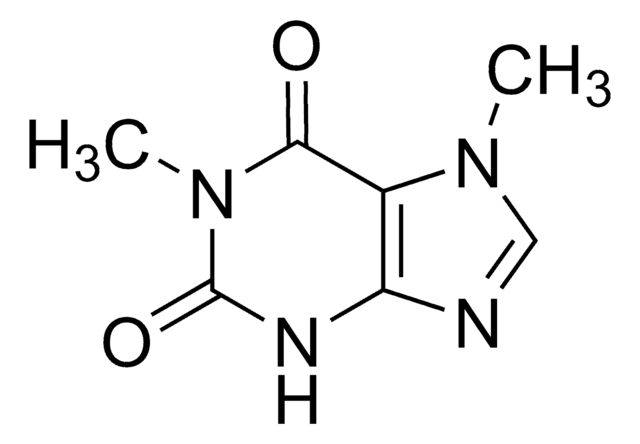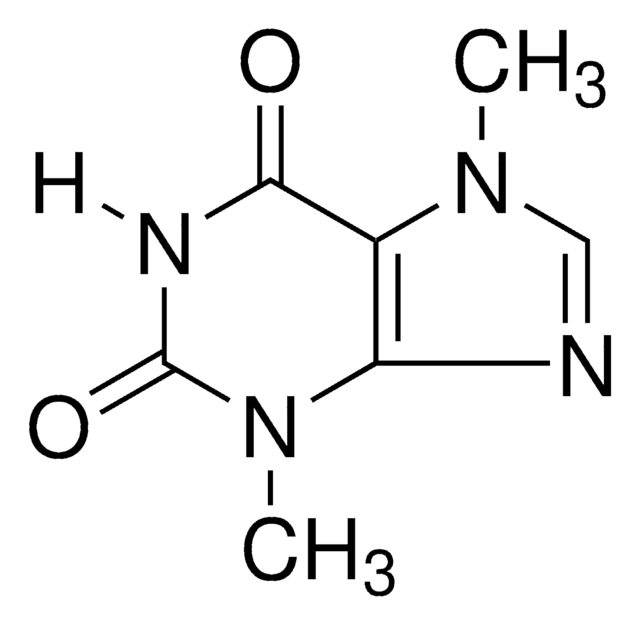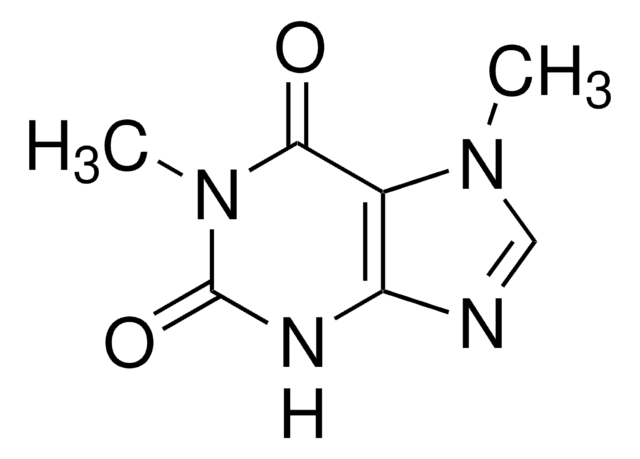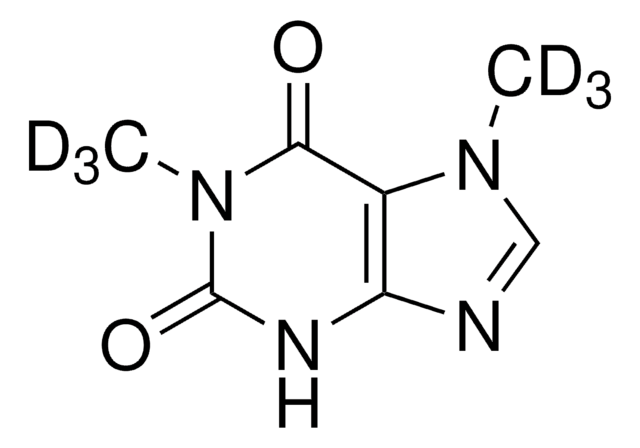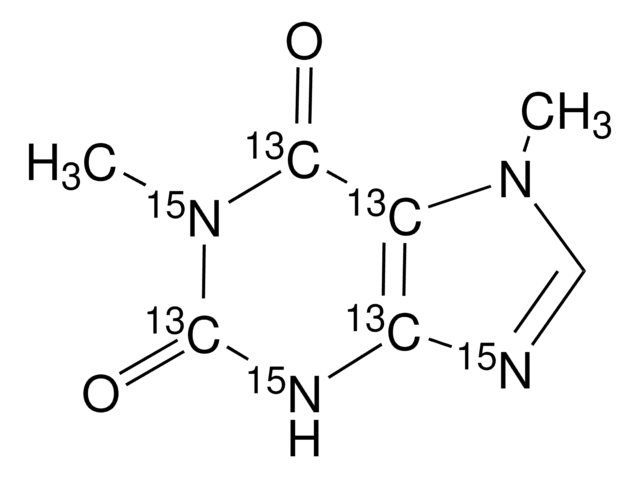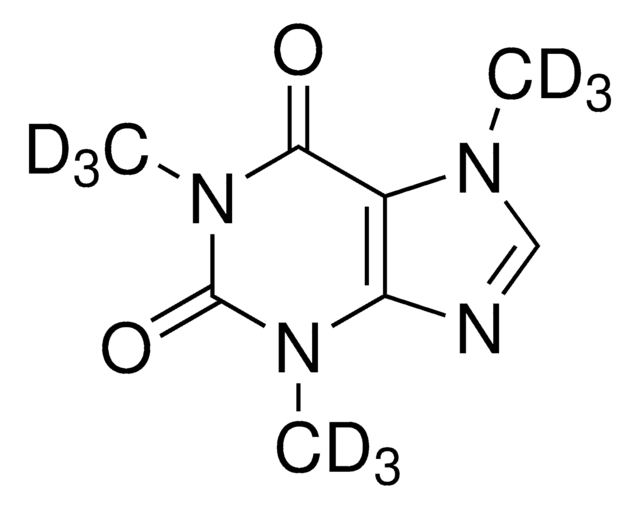D5385
1,7-Dimethylxanthine
~98% (TLC), solid, adenosine receptor ligand
Sinônimo(s):
1,7-Dimethyl-1H-purine-2,6-dione, 1,7-Dimethyl-3,7-dihydro-1H-purine-2,6-dione, 2,6-Dihydroxy-1,7-dimethylpurine, NSC 400018, Paraxanthine
About This Item
Produtos recomendados
Nome do produto
1,7-Dimethylxanthine, ~98%, solid
Ensaio
~98%
Nível de qualidade
Formulário
solid
cor
white
pf
294-296 °C (lit.)
solubilidade
ethanol: 0.6 mg/mL
H2O: 1 mg/mL
0.1 M NaOH: 2 mg/mL
cadeia de caracteres SMILES
CN1C(=O)Nc2ncn(C)c2C1=O
InChI
1S/C7H8N4O2/c1-10-3-8-5-4(10)6(12)11(2)7(13)9-5/h3H,1-2H3,(H,9,13)
chave InChI
QUNWUDVFRNGTCO-UHFFFAOYSA-N
Informações sobre genes
human ... ADORA1(134) , ADORA2A(135) , ADORA2B(136) , ADORA3(140)
rat ... Adora1(29290) , Adora2a(25369)
Procurando produtos similares? Visita Guia de comparação de produtos
Descrição geral
Aplicação
Ações bioquímicas/fisiológicas
Características e benefícios
Palavra indicadora
Warning
Frases de perigo
Declarações de precaução
Classificações de perigo
Acute Tox. 4 Oral
Código de classe de armazenamento
11 - Combustible Solids
Classe de risco de água (WGK)
WGK 1
Ponto de fulgor (°F)
Not applicable
Ponto de fulgor (°C)
Not applicable
Equipamento de proteção individual
dust mask type N95 (US), Eyeshields, Gloves
Escolha uma das versões mais recentes:
Já possui este produto?
Encontre a documentação dos produtos que você adquiriu recentemente na biblioteca de documentos.
Os clientes também visualizaram
Artigos
Xanthine is a purine base found in most human body tissues and fluids as well as in other organisms. Methylated xanthines (methylxanthines), which include caffeine, paraxanthine, theobromine, and theophylline, commonly used for their effects as mild stiµlants and as bronchodilators, notably in the treatment of asthma symptoms. This application shows the efficient separation of several common xanthines and may be applied their analysis in any number of desired matrices.
Conteúdo relacionado
Cyclic nucleotides, including cyclic AMP (cAMP), cyclic GMP (cGMP) and cyclic ADP-ribose, have been extensively studied as second messengers of intracellular events initiated by activation of GPCRs. cAMP modifies cell function in all eukaryotic cells, principally through the activation of cAMP-dependent protein kinase (PKA), but also through cAMP-gated ion channels and guanine nucleotide exchange factors directly activated by cAMP.
Nossa equipe de cientistas tem experiência em todas as áreas de pesquisa, incluindo Life Sciences, ciência de materiais, síntese química, cromatografia, química analítica e muitas outras.
Entre em contato com a assistência técnica